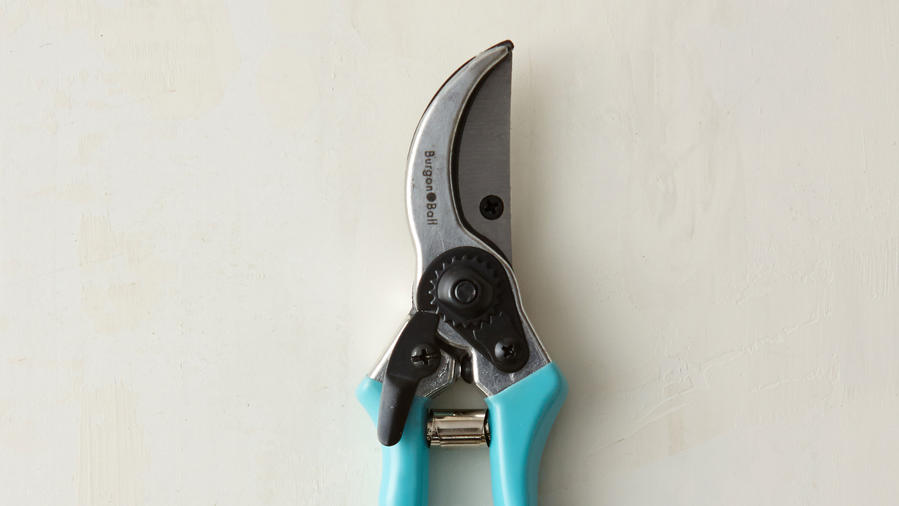
How to Maintain Your Garden Tools
Where would we be without our trusty garden tools? The better care you take of them, the better care they will take of you

Maintenance helps your garden tools last longer and perform better, so take time to properly clean, sand, sharpen, oil, and store your them for a lifetime of use.
Follow these simple steps to keep your tools in top condition all season long.
CLEAN
Dirt and sap left on garden tools contribute to the spread of soil-borne diseases and weeds; they also attract and hold moisture, leading to the spread of rust.
After each use it’s a good practice to remove any dirt or residue left on your digging tools. Simply rinse soil off at the garden hose, using a stiff bristle brush if needed, and dry thoroughly.
If dirt has dried and hardened on your tools, it may be necessary to soak them in warm soapy water and use steel wool to scrub them clean. Always dry your tools thoroughly before storing.
Disinfecting tools – especially pruners – after each use also prevents the spread of plant diseases. Dip or wipe the tools thoroughly with rubbing alcohol or hydrogen peroxide.
SAND
Moisture, whether it’s from wet soil, dew, or rain, will raise the grain on wood handled tools, making the surface rough and even splintery. To maintain smooth handles, lightly sand them down, using an 80 grit paper and finishing off with a 120-150 grit.
If your tools are showing any signs of rust, take care to remove it. A wire brush is a good option for knocking off the majority of rust, especially to access tight spaces. Use medium-grit sandpaper to remove remaining rust on larger tools such as shovels, spades, and hoes. If your tools have moving parts, such as with pruners, shears, and loppers, disassemble them first. Remove stubborn rust from small tools with fine steel wool.
SHARPEN
Once your tools are clean, they’re ready to be sharpened. Sharp blades ensure cleaner cuts when digging, pruning, and trimming.
For pruners: Use a natural water stone, or whetstone, for sharpening and honing finer edge tools such as pruners as it will produce a very sharp edge for cutting. Depending on the type of whetstone, apply a few drops of oil or water to the stone first. To sharpen, lay the beveled side of the blade against the stone, and rub the sharp edge of the blade toward the stone in a curved motion, as if you were trying to shave off a thin slice. Sharpen only the beveled side of the blade, working in the same direction as the bevel. Remove any burrs on the flat side with a file.
For other tools: For sharpening most outdoor tools such as shears, loppers, shovels, spades, and hoes, all that is needed is a 10- or 12-inch mill-bastard file. When working with a file, clamp the blades in a vise or to the top of a workbench to ensure an even stroke and avoid injury. Always push the file across the blade in a motion away from your body. Avoid drawing the file backward over the blade on the return stroke as that can dull the teeth. Move the file diagonally using moderate pressure at an even rate, so that its cutting teeth are biting into the metal on the tool. When sharpening with a file, do not use oil; metal filings will accumulate and clog the file’s serrations.
OIL
One of the most important things you can do to help your garden tools last is also one of the simplest – oil them. With this step, you’ll prevent wood from drying and cracking and metal from rusting.
Gardeners have traditionally used boiled linseed oil to protect their tools from the elements. Linseed oil is derived from the dried seeds of the flax plant and therefore a great eco alternative to any petroleum-based oil. Another option is camellia oil, a natural light oil extracted from camellia seeds that is an excellent protectant for any metal tools.
Once a year, take the time to recondition your tool handles. After cleaning wooden handles with a stiff-bristled brush and smoothing nicks and splinters with medium-grit sandpaper, coat the wood handles with linseed oil to help prevent future cracking and splintering.
Lubricate all clean, sharpened metal blades and the heads of shovels, hoes, and rakes to help keep them sharp and protected from oxidation, especially if they’re made of carbon steel (stainless steel tools do not need to be oiled).
Note: The boiled linseed oil that is available today has a small amount of solvent added to it to keep it from hardening in the can, so after you apply it to your metal and wood, let it dry completely — about 24 hours — before using your tool to allow the solvent to evaporate. Be sure to allow any oily rag to dry in the open between uses, and when disposing, dry thoroughly first or soak with water before placing in a closed metal can.
STORE
It sounds obvious, but: Put your tools away at the end of the day! Stored in a shed, garage, closet, or waterproof tool storage box, your tools will last many times longer than those left out in the sun and rain. Invest in hooks and get into the habit of hanging up your tools after use. Not only will that help prevent your tools from rusting and dulling, it will keep your storage space neat and you will be able to fit more in, find what you need quickly, and avoid unnecessary hazards.
This article first appeared on healdsburgshed.com.
